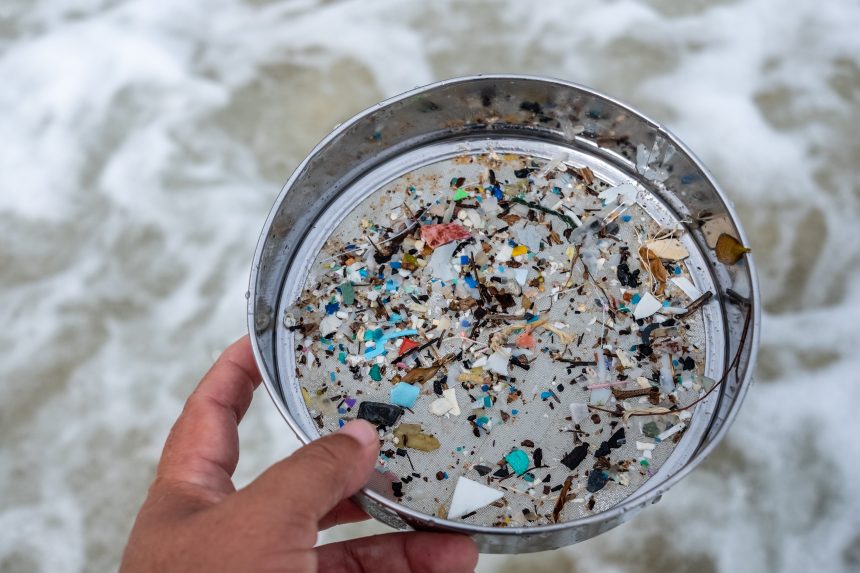In the contemporary landscape where plastic’s convenience is deeply woven into the fabric of everyday life, a pressing concern has emerged from the shadows: the issue of microplastics. Revelations from recent research have cast a spotlight on the alarmingly pervasive exposure to these diminutive plastic fragments. A striking comparison has been drawn, suggesting that the volume of microplastics we’re potentially inhaling weekly might equate to the mass of a credit card. This stark revelation brings to the forefront the widespread issue of plastic pollution and its conceivable ramifications on human health.
Deciphering Microplastics
Microplastics, defined as plastic fragments smaller than five millimeters, often arise from the decay of larger plastic items, enduring in the environment for centuries. These particles stem from various sources, including cosmetic products, synthetic fabrics, and the fragmentation of larger plastic debris. Once released into the environment, their eradication proves challenging, as they infiltrate our water bodies, air, and ultimately, the food chain.
Quantifying Exposure
Employing the analogy of a credit card to quantify microplastic exposure brings into focus the implications for our health. Detected even in the planet’s most isolated corners, microplastics have become a virtually inescapable presence in our dietary and respiratory environments. Evidence suggests these particles can breach our bodily defenses via ingestion or inhalation, with potential gateways including the seafood on our plates to the dust within our dwellings.
Health Consequences
While the long-term health consequences of microplastic exposure are under ongoing investigation, preliminary findings hint at potential hazards. Microplastics have the capacity to transport noxious pollutants and pathogens, posing risks when breathed in or consumed. Moreover, the fear looms that sustained exposure might culminate in the accumulation of these particles within the body, possibly triggering inflammation or other detrimental health effects.
Confronting the Microplastic Menace
The ubiquity of microplastics demands swift and all-encompassing countermeasures. Key strategies for mitigating plastic pollution include diminishing plastic usage and advancing waste management practices worldwide. Initiatives aimed at developing eco-friendly alternatives to traditional plastics and improving recycling processes are also vital. On a personal level, choosing minimally packaged products, endorsing recycling, and advocating for policies to curtail plastic production and waste offer paths toward mitigation.
Epilogue
The analogy of inhaling a credit card’s worth of microplastics weekly paints a vivid picture of the environmental quandaries our dependence on plastic has spawned. This concern not only underscores the magnitude of plastic pollution but also accentuates the looming anxieties over its impact on human health. As ongoing research endeavors to elucidate these effects further, the imperative to address plastic pollution transcends environmental stewardship, emerging as a crucial public health objective. Through collective endeavors to curtail plastic consumption and enhance its management, we aspire to a future where our air and water are purged of the insidious specter of microplastics.








